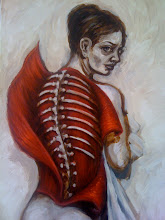
 Before language there was dance. Since the beginnings of man dance been a form of communication and celebration. Peoples in every region of the world have developed their own forms of dance. Regional dance forms make up an integral part of each countries cultural heritage.
Before language there was dance. Since the beginnings of man dance been a form of communication and celebration. Peoples in every region of the world have developed their own forms of dance. Regional dance forms make up an integral part of each countries cultural heritage. The exact origins of what is commonly known today as “belly dance” are unclear. The dance form has roots in ethnic Greek, Turkish, Syrian, Egyptian, and African dance forms. These various dance forms are often drastically different from the images we have become accustomed to seeing in the West. In most cultures (excluding perhaps our own) “belly dance” is practiced as a social and celebratory custom.
So called “belly dance” was introduced into the United States at the World’s Fair in Chicago in 1893. The dance exhibition, which appeared at the Fair would have been entirely different from the Cabaret influenced entertainment we currently associate with the term “belly dance” today, yet the show gained considerable notoriety for its “exotic” nature, and its evident cintrast to the Victorian sensibilities of the time. The term “belly dance” itself was coined then and there in reference to the uncorseted fashion of dress worn by the dancers, although you could not not see the girls stomachs (as seen on the left). Through cultural misconceptions and poor American imitations the Western world came to view the dance from as risque, and drove the practice underground.
“Belly dance” made a resurgence in America in the 1960s. The dance was reborn in ethnic nightclubs in large cities across the country. The reintroduction of “belly dance” embraced the ethnic roots of the dance form as well as the Western misconceptions. The shows seen in these venues perpetuated more extravagant costumes, and more evocative performances. This Americanized version is referred to today as Egyptian Cabaret. This new form of dance quickly gained popular interest, and has come to represent what most Americans recognize as “belly dance” today.
In the midst of growing cultural conflict modern “belly dance” speaks without words of rich and beautiful heritage, and the commonalities of our countries, our bodies, and our mutual love of dance in a language inherent to humanity.

No comments:
Post a Comment